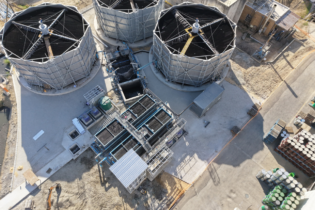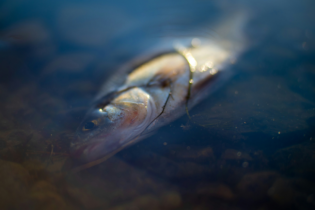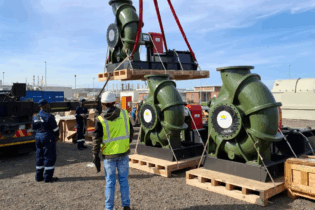A report by Herman Smit* on the 34th Annual WateReuse Symposium in San Diego, California
South Africa is in a water crisis and wastewater reuse, desalination and potable water quality are top of the agenda. Where will our future water be sourced? Different water sources become viable solutions for the drought with advanced treatment technologies used for the augmentation of conventional water sources with reuse and desalination. We need to plan how to use our water to its maximum potential, and follow the international trends in water reuse and change the paradigm of water and wastewater management, which aims to recycle every drop of water. Advanced technologies provide a smaller footprint, less operator involvement and less dependency on chemicals for water treatment. QFS has brought first-world technologies to South Africa and localised them to be more affordable for local applications. Our company, QFS, has made it possible – using membrane treatment – to process domestic wastewater directly back into drinking water. The technology used is world-class and proven to produce drinking water to World Health Organization standards. 34th Annual WateReuse Symposium “The WateReuse organisation represents a coalition of utilities that recycle water, businesses that support the development of recycled water projects, and consumers of recycled water. The fundamental principle of water reuse is using the right water for the right purpose, everywhere and all the time. That means aiding and accelerating the natural process of cleaning the water to make it suitable for its intended purpose, from irrigation to industrial uses to drinking. While the science is clear that recycling water is safe, misinformation has contributed to community resistance for water reuse projects,” stated Paul Jones, president of the WateReuse Association. The WateReuse Symposium creates the ideal platform to engage with municipalities, service providers and technology suppliers to promote the acceptance of recycled municipal wastewater. Acceptance starts with education, which is shared through the multidiscipline presentations and panel discussions delivered over the four-day symposium program. As is the norm in many foreign cities, we need to take domestic wastewater back to drinking water standards. As a water treatment professional with decades of experience, I believe that every town in South Africa could, potentially, be reusing their wastewater. This is affordable and has been done for years in other countries. Symposium highlights South Africa needs to follow the international trends in water reuse and change the paradigm of water and wastewater management, which aims to recycle every drop of water via decentralised water treatment plants. This was confirmed by Erin Bonney of Bluefield Research, who presented on process was chosen for the full-scale facility with similar capital values but a reduced operational cost on a year-to-year basis. Andrew Salveson from Carollo Engineers presented the ‘Demonstration Facility: Innovative Potable Reuse Technologies for Pismo Beach’. The droughts in California highlighted the vulnerabilities of the region’s water supply portfolio. Recycled water was identified as the most effective augmentation supply option (see Figure 2). The benefits of a demonstration plant include promoting engagement with the public, demonstrating the technology and optimising engineering. A thorough 12-month test regime will help drive the design and provide new research for the potable reuse industry. The process was operated without chloramines to determine if this process can reduce the formation of NDMA and improve economics. Using no chloramines nearly eliminates NDMA formation but maintains post-RO UVT. UF membrane fouling must be considered without a disinfectant dose before the UF membranes. Chemical enhanced backwashes might be considered with biological fouling. Microbial reduction after the UF membrane is an essential test for the success of the downstream process and showed a positive result during the trial operational period (see Table 1).
Toilet-to-tap – Get over it!
Patricia Tennyson from Katz & Associates challenged the notion that we are too sensitive for the ‘yuck’ factor associated with wastewater reuse. Properly treated wastewater is a valuable source of water to augment traditional surface water. Considering that the reuse of wastewater could mitigate water scarcity in drought areas, we should make sure the public is educated and informed about the facts related to wastewater reuse. Tennyson advocated that everyone in the water industry should help to stop the media from using terms and headlines that create negative perceptions around wastewater reuse. A 2014 water research study in the US investigated a model to communicate plans for increasing awareness and fostering acceptance of potable reuse. Recommended nomenclature, deemed more acceptable, was purified water, drinking water, pure new water, renewed water and pure water. Phrases already being successfully used in the US for current projects and pilots are advanced water purification, purified water, advanced purified water, purified potable water, highly purified water and water purification project (Sources: OCWD, Pure Water Monterey, PureWater Soquel, Padre Dam, Pure Water San Diego, PureWater Colorado). A strategy is required to change the misconceptions associated with wastewater reuse, which includes:- prioritising understanding the community that will be using the water, which will also determine the terminology used
- forging partnerships in the community to communicate your positive message and education around water
- using expert endorsement for the process and safety of the final water
- making the facility accessible for tours and public visits
- reaching out to the public with community days, bottled water and presentations
- using images to your advantage and engaging the media early
- using social media as a marketing tool.








